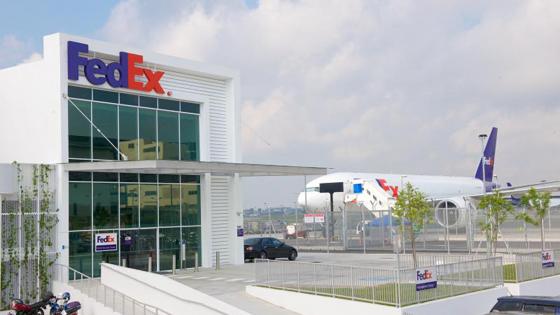Sam Folley, partner at international law firm Trowers & Hamlins, considers how airports could better manage and maximise income from commercial tenants.
Are airports simply ‘winging it’ where their commercial tenants are concerned? Many airports have tenant portfolios that would make a commercial landlord jealous – yet often airport operators are not making the most of the opportunity presented. Airports have a diverse range of occupants across retail, maintenance, repair, and operations facilities, catering and security services, FBOs (fixed-base operators) and cargo storage, all often paying a premium rental for airside locations. This is a critical part of an airport’s business and often accounts for a large percentage of its revenue but can be overlooked as merely ancillary.
Documentation of occupancies
It is not uncommon to find airport occupiers have taken occupation on the basis of an informal exchange of letters, or a lease which has long since expired. Such arrangements are full of risks for the airport owner, such as the tenant obtaining security of tenure (whereby they have a statutory right to remain in the premises), uncertainty of the terms under which they occupy, and failure to maximise rental. By having appropriate legal documents, across all types of occupiers, airports can make the most of their property as landlords.
A number of options are available to document these occupancies, and it is important the right one is chosen. The most common of course is the lease, which gives an occupier exclusive occupation of premises fora fixed period. Leases deal with all the above concerns. Alternatively, for short term occupations, a “tenancy at will” may be appropriate. This will reduce legal fees and should get a tenant in quickly. Also, a purely commercial document such as a concession agreement could be appropriate where the nature of the arrangement is more financial, for example where a profit share arrangement based on the income of a retail unit is linked to passenger numbers.

Sam Folley specialises in acting for airport operators, advising the sector on airport expansion and development and airside leasing
Airports have large numbers of tenants, and often on a variety of arrangements. Trowers & Hamlins uses a bespoke short form lease which deals with airport specific issues while securing a fair position for landlord and tenant, therefore minimising negotiations, time and legal fees. This can easily be rolled out quickly to multiple airport tenants, bringing them into uniform arrangements for ease of management.
Securing maximum income
Are airports securing maximum income from buildings? This is a legal question as well as a commercial one. Airport operators will naturally seek to maximise their income from rentals. The airside location of many buildings can often give those rentals a premium over neighbouring buildings outside of the airport. There are multiple ways airports can seek to maximise this income, which is why airport operators may seek advice from commercial property agents as to how much rent should be charged. Once agreed, lawyers can then get to work securing this income under the terms of a lease or alternative agreement.
Similar to serviced offices, a higher income could be achieved if the rent covers service charge, insurance and rates. In an era of high utility costs, these could still be charged for separately to ensure rents are not eroded. Alternatively, if the airport currently benefits from onsite renewables, or will do so in the future, the tenants can be obliged to purchase electricity directly from the landlord. An all-inclusive package can be attractive for occupiers as it means they do not need to concern themselves with separate invoices for variable costs. If the cost of providing services to tenants might be particularly high, the service charge should be addressed separately from the rent.
Airport real estate is highly dynamic, more so than even retail estates
Rent reviews are of the utmost importance. Usually commercial leases utilise open market rent reviews, whereby the rent is reviewed every five years by reference to rents of comparable premise. This is not as straightforward for airports as comparable premises are difficult to find. Instead, airport operators may utilise inflation-based reviews, which take effect annually. Typically rent will be linked to increases in the retail price index (on an upwards only basis), or sometimes the consumer price index. “Caps” and “collars” can be offered to protect both the landlord and the tenant so the rent is always subject to a minimum and maximum increase. Of course, calculating and implementing rent reviews annually for all tenants requires systems to be put in place and staff to be allocated to this role, but the revenue generated should more than make this worthwhile.
Ensuring flexibility
Airport real estate is highly dynamic, more so than even retail estates. Airport operators often need to relocate tenants as airports expand or alter, and tenants often want to move as business requirements change. Traditional leases can be clunky and restrictive, but they can be drafted to be more flexible. Trowers & Hamlins has implemented lease structures at airports that give the facilities this flexibility.

The range of tenants – from cargo to F&B – gives airports an advantage over other real estate players
A mixture of break clauses and relocation rights (or “lift and shift” clauses) can be incorporated. A “rolling” landlord break right gives the most flexibility, but a tenant may be reluctant to allow a situation where they can be kicked out of the airport so easily. Alternatively, fixed break dates could be agreed to give the tenant at least a minimum term. Or better still, a lift and shift whereby the landlord can only terminate the lease if it can offer the tenant comparable alternative premises within the airport (or specific part of the airport). Provisions can even be added that will enable the landlord to take back part or parts only of the premises.
Where space is shared between airport occupiers, for example within a hangar or retail concessions in departure areas, a licence agreement can also be utilised. These agreements can only be used where there is a true sharing arrangement but have the advantage of being quicker and cheaper to implement than a lease.
Property managing agents
Airport operators could utilise external property professionals to advise and run all or some airport property. This would be formalised by a commercial agreement known as a property management agreement. The exact duties of the agent would be a matter for agreement, but could be as wide ranging as marketing the premises, agreeing rents with new tenants, dealing with lawyers, preparing service charges, collecting rents and implementing rent reviews. This would take the pressure off internal airport resources and potentially lead to an increase in rental income.
Taking this a step further, the airport owner could transfer a share of ownership in its property to a property company, for example by creating a joint venture company that would take ownership. This could bring in the expertise of property professionals and give the airport a cash injection. The airport owners could then leave the property company partner to efficiently run its real estate in return for a share of the rental income.
